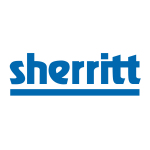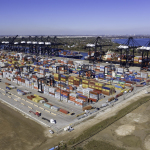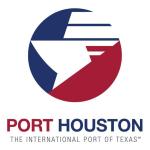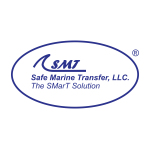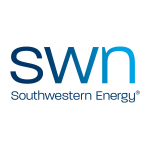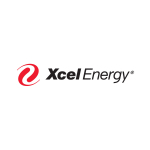BOISE, Idaho--(BUSINESS WIRE)--IDACORP, Inc. (NYSE: IDA) reported second quarter 2021 net income attributable to IDACORP of $70.0 million, or $1.38 per diluted share, compared with $60.4 million, or $1.19 per diluted share, in the second quarter of 2020. For the first six months of 2021, IDACORP reported net income attributable to IDACORP of $114.9 million, or $2.27 per diluted share, compared with $97.9 million, or $1.94 per diluted share, in the first six months of 2020.

“Continued robust customer growth, amplified by extreme heat across the western United States, led to new record loads on Idaho Power’s systems and the highest second quarter earnings in IDACORP’s history," said IDACORP President and Chief Executive Officer Lisa Grow. "Our operators effectively managed through demanding conditions as we saw strong sales growth across all customer classes, as well as increased usage of Idaho Power’s transmission system for the movement of energy to serve loads throughout the region.
"We expect strong customer growth to continue, and we feel IDACORP is in a solid position heading into a period of increasing capital projects and infrastructure needs."
IDACORP increased its previously reported full-year 2021 earnings guidance to the range of $4.70 to $4.90 per diluted share and is reaffirming that Idaho Power does not expect to utilize any of the additional tax credits available under its Idaho earnings support regulatory mechanism in 2021. The earnings guidance also assumes normal weather conditions over the last six months of the year and a return to more normal economic conditions following the impact from COVID-19.
Performance Summary
A summary of financial highlights for the periods ended June 30, 2021 and 2020 is as follows (in thousands, except per-share amounts):
|
|
Three months ended
June 30,
|
|
Six months ended
June 30,
|
|
|
2021
|
|
2020
|
|
2021
|
|
2020
|
Net income attributable to IDACORP, Inc.
|
|
$
|
70,023
|
|
$
|
60,389
|
|
$
|
114,854
|
|
$
|
97,879
|
Average outstanding shares – diluted (000’s)
|
|
50,622
|
|
50,567
|
|
50,601
|
|
50,547
|
IDACORP, Inc. earnings per diluted share
|
|
$
|
1.38
|
|
$
|
1.19
|
|
$
|
2.27
|
|
$
|
1.94
|
The table below provides a reconciliation of net income attributable to IDACORP for the three and six months ended June 30, 2021, from the same period in 2020 (items are in millions and are before related income tax impact unless otherwise noted).
|
|
Three months
ended
|
|
Six months
ended
|
Net income attributable to IDACORP, Inc. - June 30, 2020
|
|
|
|
$
|
60.4
|
|
|
|
|
$
|
97.9
|
|
Increase (decrease) in Idaho Power net income:
|
|
|
|
|
|
|
|
|
Customer growth, net of associated power supply costs and power cost adjustment mechanisms (PCA)
|
|
3.9
|
|
|
|
|
7.6
|
|
|
|
Usage per retail customer, net of associated power supply costs and power cost adjustment mechanisms
|
|
22.9
|
|
|
|
|
20.5
|
|
|
|
Idaho fixed cost adjustment (FCA) revenues
|
|
(5.1
|
)
|
|
|
|
(5.0
|
)
|
|
|
Retail revenues per megawatt-hour (MWh), net of associated power supply costs and power cost adjustment mechanisms
|
|
(6.8
|
)
|
|
|
|
(6.1
|
)
|
|
|
Transmission wheeling-related revenues
|
|
3.9
|
|
|
|
|
8.0
|
|
|
|
Other operations and maintenance (O&M) expenses
|
|
(5.3
|
)
|
|
|
|
(1.2
|
)
|
|
|
Other changes in operating revenues and expenses, net
|
|
(0.4
|
)
|
|
|
|
(1.2
|
)
|
|
|
Increase in Idaho Power operating income
|
|
13.1
|
|
|
|
|
22.6
|
|
|
|
Non-operating income and expenses
|
|
1.0
|
|
|
|
|
0.6
|
|
|
|
Income tax expense
|
|
(4.2
|
)
|
|
|
|
(5.7
|
)
|
|
|
Total increase in Idaho Power net income
|
|
|
|
9.9
|
|
|
|
|
17.5
|
|
Other IDACORP changes (net of tax)
|
|
|
|
(0.3
|
)
|
|
|
|
(0.5
|
)
|
Net income attributable to IDACORP, Inc. - June 30, 2021
|
|
|
|
$
|
70.0
|
|
|
|
|
$
|
114.9
|
|
Net Income - Second Quarter 2021
lDACORP's net income increased $9.6 million for the second quarter of 2021 compared with the second quarter of 2020, primarily due to higher net income at Idaho Power. Customer growth increased operating income by $3.9 million in the second quarter of 2021 compared with the second quarter of 2020, as the number of Idaho Power customers grew by over 16,900, or 2.9 percent, during the twelve months ended June 30, 2021. Higher sales volumes on a per-customer basis in all customer classes increased operating income by $22.9 million as warmer and drier weather caused customers to use more energy for cooling or irrigation in the second quarter of 2021 compared with the second quarter of 2020. Increases in usage per commercial and industrial customers were partially due to a return to more normal economic activity in the second quarter of 2021 compared with the second quarter of 2020, which was affected by negative COVID-19-related business conditions. The increase in sales volumes per customer was partially offset by the FCA mechanism (applicable to residential and small general service customers), which decreased revenues in the second quarter of 2021 by $5.1 million compared with the second quarter of 2020.
The net decrease in retail revenues per MWh, net of associated power supply costs and power cost adjustment mechanisms, decreased operating income by $6.8 million during the second quarter of 2021 compared with the second quarter of 2020. In the second quarter of 2021, higher wholesale energy market prices due to a heat wave in the western United States and higher energy usage by Idaho Power customers increased Idaho Power's net power supply expenses. The increase in the amount of net power supply expenses that were not deferred through Idaho Power's power cost adjustment mechanisms was the primary cause of the negative variance in net retail revenues per MWh between the comparison periods.
Transmission wheeling-related revenues increased $3.9 million during the second quarter of 2021 compared with the second quarter of 2020 as the warmer, drier weather in the western United States increased wheeling volumes. Also, Idaho Power's open access transmission tariff (OATT) rates were approximately 10 percent higher in the second quarter of 2021 compared with the second quarter of 2020.
Other O&M expenses were $5.3 million higher in the second quarter of 2021 compared with the second quarter of 2020, primarily due to the timing of performing certain maintenance projects at Idaho Power's jointly-owned thermal generation plants in 2021 instead of in 2020. Also, other O&M expenses increased in the second quarter of 2021 compared with the second quarter of 2020, as a result of an increase in labor-related costs from higher performance-based variable compensation accruals.
The increase in income tax expense for the second quarter of 2021 compared with the second quarter of 2020 was primarily due to greater 2021 pre-tax income.
Net Income - Year-to-Date 2021
IDACORP's net income increased $17.0 million for the first half of 2021 compared with the first half of 2020, primarily due to higher net income at Idaho Power. Customer growth increased operating income by $7.6 million in the first half of 2021 compared with the first half of 2020. An increase in sales volumes on a per-customer basis increased operating income by $20.5 million due primarily to warmer and drier weather that caused customers to use more energy for cooling or irrigation in the first half of 2021 compared with 2020. To a lesser extent, a return to more normal economic conditions for commercial and industrial customers in the first half of 2021 compared with 2020, also increased sales volumes on a per-customer basis, as the first half of 2020 was affected by negative COVID-19-related business conditions. The increase in sales volumes per customer was partially offset by the FCA mechanism (applicable to residential and small general service customers), which decreased revenues by $5.0 million.
The net decrease in retail revenues per MWh in the first half of 2021 compared to the first half of 2020, decreased operating income by $6.1 million primarily due to higher power supply costs. In the second quarter of 2021, higher wholesale energy market prices due to a heat wave in the western United States and higher energy usage by Idaho Power customers increased Idaho Power's net power supply expenses. The increase in the amount of net power supply expenses that were not deferred through Idaho Power's power cost adjustment mechanisms was the primary cause of the negative variance in net retail revenues per MWh between the comparison periods.
During the first half of 2021, transmission wheeling-related revenues increased $8.0 million compared with the first half of 2020, as the warmer and drier weather in the western United States caused customers in the region to use more energy for cooling or irrigation, as applicable, which increased wheeling volumes. Colder winter weather in the southwest United States during the first quarter of 2021 also contributed to increased wheeling volumes in the first six months of 2021 compared with the first six months of 2020. In addition, Idaho Power's OATT rates were approximately 10 percent higher in the first six months of 2021 compared with the first six months of 2020.
The increase in income tax expense for the first half of 2021 compared with the first half of 2020 was primarily due to greater 2021 pre-tax income.
Based on its estimate of full-year 2021 return on year-end equity in the Idaho jurisdiction, in the first half of 2021 Idaho Power recorded no additional accumulated deferred investment tax credits (ADITC) amortization or any provision against revenues for sharing of earnings with customers under the Idaho regulatory settlement stipulation approved in May 2018.
2021 Annual Earnings Guidance and Key Operating and Financial Metrics
IDACORP is increasing its earnings guidance estimate for 2021. The 2021 guidance incorporates all of the key operating and financial assumptions listed in the table that follows (in millions, except per share amounts):
|
|
Current(1)
|
|
Previous(2)
|
IDACORP Earnings Guidance (per share)
|
|
$ 4.70 – $4.90
|
|
$ 4.60 – $ 4.80
|
Idaho Power Additional ADITCs
|
|
No change
|
|
None
|
Idaho Power Operating & Maintenance Expense
|
|
No change
|
|
$ 345 – $ 355
|
Idaho Power Capital Expenditures, Excluding Allowance for Funds Used During Construction
|
|
No change
|
|
$ 320 – $ 330
|
Idaho Power Hydropower Generation (MWh)
|
|
5.0 – 6.0
|
|
5.5 – 7.5
|
(1)
|
|
As of July 29, 2021.
|
(2)
|
|
As of April 29, 2021, the date of filing IDACORP's and Idaho Power's Quarterly Report on Form 10-Q for the quarter ended March 31, 2021.
|
To-date, Idaho Power has not experienced significant disruption to its business operations, critical supply-chain shortages, or major declines in customer usage related to COVID-19. However, if circumstances associated with COVID-19 were to deteriorate more than Idaho Power anticipates in the company’s service area or nationally, Idaho Power could experience more substantial impacts, which could affect financial projections and results that are currently contemplated in the guidance range above. More detailed information on Idaho Power’s actions in response to COVID-19, as well as operational and financial risks associated with COVID-19, are described in IDACORP’s and Idaho Power’s Annual Report on Form 10-K filed on February 18, 2021, with the U.S. Securities and Exchange Commission, which is also available for review on IDACORP’s website at www.idacorpinc.com.
More detailed financial information is provided in IDACORP's Quarterly Report on Form 10-Q filed today with the U.S. Securities and Exchange Commission and posted to the IDACORP website at www.idacorpinc.com.
Web Cast / Conference Call
IDACORP will hold an analyst conference call today at 2:30 p.m. Mountain Time (4:30 p.m. Eastern Time). All parties interested in listening may do so through a live webcast on IDACORP's website (www.idacorpinc.com), or by calling (833) 759-1159 for listen-only mode. The passcode for the call is 4696145. The conference call logistics are also posted on IDACORP's website and will be included in IDACORP's earnings news release. Slides will be included during the conference call. To access the slide deck, register for the event just prior to the call at www.idacorpinc.com/investor-relations/earnings-center/default.aspx. A replay of the conference call will be available on the company's website for 12 months and will be available shortly after the call.
Background Information
IDACORP, Inc. (NYSE: IDA), Boise, Idaho-based and formed in 1998, is a holding company comprised of Idaho Power, a regulated electric utility; IDACORP Financial, a holder of affordable housing projects and other real estate investments; and Ida-West Energy, an operator of small hydroelectric generation projects that satisfy the requirements of the Public Utility Regulatory Policies Act of 1978. Idaho Power began operations in 1916 and employs approximately 2,000 people to serve a 24,000-square-mile service area in southern Idaho and eastern Oregon. Idaho Power’s goal of 100% clean energy by 2045 builds on its long history as a clean-energy leader providing reliable service at affordable prices. With 17 low-cost hydropower projects at the core of its diverse energy mix, Idaho Power’s more than 590,000 residential, business, and agricultural customers pay among the nation's lowest prices for electricity. To learn more about IDACORP or Idaho Power, visit www.idacorpinc.com or www.idahopower.com.
Forward-Looking Statements
In addition to the historical information contained in this press release, this press release contains (and oral communications made by IDACORP, Inc. and Idaho Power Company may contain) statements, including, without limitation, earnings guidance and estimated key operating and financial metrics, that relate to future events and expectations and, as such, constitute forward-looking statements within the meaning of the Private Securities Litigation Reform Act of 1995. Any statements that express, or involve discussions as to, expectations, beliefs, plans, objectives, outlook, assumptions, or future events or performance, often, but not always, through the use of words or phrases such as "anticipates," "believes," "continues," "could," "estimates," "expects," "guidance," "intends," "potential," "plans," "predicts," "projects or projected," "targets," or similar expressions, are not statements of historical facts and may be forward-looking. Forward-looking statements are not guarantees of future performance and involve estimates, assumptions, risks, and uncertainties. Actual results, performance, or outcomes may differ materially from the results discussed in the statements. In addition to any assumptions and other factors and matters referred to specifically in connection with such forward-looking statements, factors that could cause actual results or outcomes to differ materially from those contained in forward-looking statements include the following: (a) the effect of decisions by the Idaho and Oregon public utilities commissions and the Federal Energy Regulatory Commission that impact Idaho Power's ability to recover costs and earn a return on investment; (b) changes to or the elimination of Idaho Power's regulatory cost recovery mechanisms; (c) the impacts of the COVID-19 pandemic on the global and regional economy and on Idaho Power's employees, customers, contractors, and suppliers, including on loads and revenues, uncollectible accounts, transmission revenues, and other aspects of the companies' business; (d) changes in residential, commercial, and industrial growth and demographic patterns within Idaho Power's service area, and their associated impacts on loads and load growth, and the availability of regulatory mechanisms that allow for timely cost recovery through customer rates in the event of those changes; (e) abnormal or severe weather conditions (including conditions and events associated with climate change), wildfires, droughts, earthquakes, and other natural phenomena and natural disasters, which affect customer sales, hydropower generation levels, repair costs, service interruptions, liability for damage caused by utility property, and the availability and cost of fuel for generation plants or purchased power to serve customers; (f) advancement of self-generation, energy storage, energy efficiency, alternative energy sources, and other technologies that may reduce Idaho Power's sale or delivery of electric power or introduction of operational or cyber-security vulnerabilities to the power grid; (g) acts or threats of terrorist incidents, acts of war, social unrest, cyber-attacks, the companies' failure to secure data or to comply with privacy laws or regulations, physical security breaches, or the disruption or damage to the companies' business, operations, or reputation resulting from such events; (h) the expense and risks associated with capital expenditures for, and the permitting and construction of, utility infrastructure that Idaho Power may be unable to complete or may not be deemed prudent by regulators for cost recovery; (i) variable hydrological conditions and over-appropriation of surface and groundwater in the Snake River Basin, which may impact the amount of power generated by Idaho Power's hydropower facilities; (j) the ability of Idaho Power to acquire fuel, power, electrical equipment, and transmission capacity on reasonable terms, particularly in the event of unanticipated or abnormally high power demands, price volatility, lack of physical availability, transportation constraints, disruptions or delays in the supply chain, or a lack of credit; (k) disruptions or outages of Idaho Power's generation or transmission systems or of any interconnected transmission systems which can result in liability for Idaho Power, increase power costs, and reduce revenues; (l) accidents, terrorist acts, fires (either affecting or caused by Idaho Power facilities or infrastructure), explosions, mechanical breakdowns, and other unplanned events that may occur while operating and maintaining assets, which can cause unplanned outages, reduce generating output, damage company assets, operations, or reputation, subject Idaho Power to third-party claims for property damage, personal injury, or loss of life, or result in the imposition of civil, criminal, and regulatory fines and penalties for which Idaho Power may have inadequate insurance coverage; (m) the increased purchased power costs and operational challenges associated with purchasing and integrating intermittent renewable energy sources into Idaho Power's resource portfolio; (n) failure to comply with state and federal laws, regulations, and orders, including new interpretations and enforcement initiatives by regulatory and oversight bodies, which may result in penalties and fines and increase the cost of compliance, and the cost of remediation; (o) changes in tax laws or related regulations or new interpretations of applicable laws by federal, state, or local taxing jurisdictions, and the availability of tax credits, and the tax rates payable by IDACORP shareholders on common stock dividends; (p) adoption of, changes in, and costs of compliance with laws, regulations, and policies relating to the environment, natural resources, and threatened and endangered species, and the ability to recover associated increased costs through rates; (q) the inability to obtain or cost of obtaining and complying with required governmental permits and approvals, licenses, rights-of-way, and siting for transmission and generation projects and hydropower facilities; (r) failure to comply with mandatory reliability and security requirements, which may result in penalties, reputational harm, and operational changes; (s) the impacts of economic conditions, including inflation, interest rates, supply costs, population growth or decline in Idaho Power's service area, changes in customer demand for electricity, revenue from sales of excess power, credit quality of counterparties and suppliers, and the collection of receivables; (t) the ability to obtain debt and equity financing or refinance existing debt when necessary and on favorable terms, which can be affected by factors such as credit ratings, volatility or disruptions in the financial markets, interest rate fluctuations, decisions by the Idaho or Oregon public utility commissions, and the companies' past or projected financial performance; (u) changes in the method for determining the London Interbank Offered Rate (LIBOR) and the potential replacement of LIBOR and the impact on interest rates for IDACORP's and Idaho Power's credit facilities; (v) the ability to enter into financial and physical commodity hedges with creditworthy counterparties to manage price and commodity risk for fuel, power, and transmission, and the failure of any such risk management and hedging strategies to work as intended; (w) changes in actuarial assumptions, changes in interest rates, increasing healthcare costs, and the actual and projected return on plan assets for pension and other post-retirement plans, which can affect future pension and other postretirement plan funding obligations, costs, and liabilities and the companies' cash flows; (x) the assumptions underlying the coal mine reclamation obligations at Bridger Coal Company and related funding and bonding requirements, and the remediation costs associated with planned exits from participation in Idaho Power's co-owned coal plants; (y) the ability to continue to pay dividends and achieve target-payout ratios based on financial performance and in light of credit rating considerations, contractual covenants and restrictions, and regulatory limitations; (z) Idaho Power's concentration in one industry and one region and the resulting lack of diversification, and the resulting exposure to regional economic conditions and regional legislation and regulation; (aa) employee workforce factors, including the operational and financial costs of unionization or the attempt to unionize all or part of the companies' workforce, the impact of an aging workforce and retirements, the cost and ability to attract and retain skilled workers and third-party vendors, and the ability to adjust the labor cost structure when necessary; and (bb) adoption of or changes in accounting policies and principles, changes in accounting estimates, and new U.S. Securities and Exchange Commission or New York Stock Exchange requirements, or new interpretations of existing requirements. Any forward-looking statement speaks only as of the date on which such statement is made. New factors emerge from time to time and it is not possible for management to predict all such factors, nor can it assess the impact of any such factor on the business or the extent to which any factor, or combination of factors, may cause results to differ materially from those contained in any forward-looking statement. Readers should also review the risks and uncertainties listed in IDACORP, Inc.'s and Idaho Power Company's most recent Annual Report on Form 10-K and other reports the companies file with the U.S. Securities and Exchange Commission, including (but not limited to) Part I, Item 1A - “Risk Factors” in the Form 10-K and Management's Discussion and Analysis of Financial Condition and Results of Operations and the risks described therein from time to time. IDACORP and Idaho Power disclaim any obligation to update publicly any forward-looking information, whether in response to new information, future events, or otherwise, except as required by applicable law.

Contacts
Investor and Analyst Contact
Justin S. Forsberg
Director of Investor Relations & Treasury
Phone: (208) 388-2728
This email address is being protected from spambots. You need JavaScript enabled to view it.
Media Contact
Jordan Rodriguez
Corporate Communications
Phone: (208) 388-2460
This email address is being protected from spambots. You need JavaScript enabled to view it.



